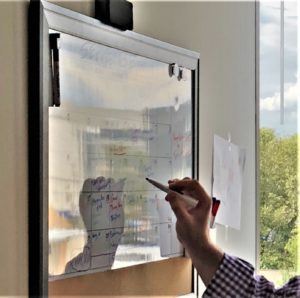What makes providing evidence for one case effortless, and others very difficult? What can you do to help your personal injury case move forward?
Providing evidence for some accidents is very easy, while others can be extremely difficult. There are several factors that play a role in proving a case, and each of which is individually important.

- Although not every form of evidence is needed for every case, the more evidence you have, the better your chances are for reaching a good settlement.
Here are 5 of the best sources of evidence for an injury case!
EXHIBIT A: VIDEO EVIDENCE
It is hard to argue against a video. When you are in an accident, there may be several different sources of video that captured it. If you have a dash camera, that is a great way to capture an accident on film to later use as evidence in your case. If not, your attorney may reach out to businesses close to the accident site, or even go to the site themselves and document the safety concerns of the area.
If the accident in question was a slip and fall, generally businesses have video cameras set up for security purposes and can be reviewed for video evidence of a fall.
This video evidence can show:
- Hazardous walking conditions
- Signs of neglect
- Signs of malice
- Falling conditions
Many times vehicle accidents do not require video evidence, whereas slip and fall accidents need some sort of concrete proof that the slip and fall happened, and that it was the fault of the business.
EXHIBIT B: WITNESS STATEMENTS
When the police arrive at the scene of an accident, they not only speak to those involved, but to any witnesses that are nearby as well. Witnesses are a hugely important source of evidence as they are almost always a stranger to all involved, and have no bias either way.
So how can a witness help?
They will have a clear understanding of the accident, whereas someone involved may have different perspectives and biases. They also may have taken a video or picture of the accident which can show a different view of how the accident occurred.
EXHIBIT C: THE POLICE REPORT
The police report is the center of the entire accident. Many times without a filed police report, proving who is at fault is nearly impossible. It is critical to always call the police when an accident occurs. A small fender bender may seem like it can be forgiven, but even a small collision can cause damage to your vehicle or injuries that require months of treatment. You should not be responsible for paying for damages or injuries that were not your fault!
EXHIBIT D: PROPERTY DAMAGE
Depending on the damage to the vehicle, it can either be very easy or extremely difficult to prove liability.
Consider this:
- Your vehicle was damaged in the back
- The other party’s vehicle was damaged in the front
It is highly likely that your vehicle was struck in a rear-end collision. Now, if both your and the other party’s vehicles both have damage to the front left bumper, it would be more difficult to prove which driver was at fault by the damages alone, because they are both exactly the same, and represent an accident that could be either party’s fault.
EXHIBIT E: INJURIES
Sometimes, specific injuries can be a sign of a specific accident. For example, people who suffer from rear-end collisions tend to have whiplash symptoms when they see a physician. Although some injuries are more specific, there are many different injuries that can occur that are more ambiguous. These injuries are still highly important to the case, and with some digging can even further develop the case.
Thoroughly reviewing the medical records and bills is an important step in the process. Some injuries may require ongoing treatment or may have caused permanent damage that cannot be repaired. Getting fair compensation for your injuries means that you can pay any remaining medical bills, and have funds left over to deal with a future treatment that may be needed.




